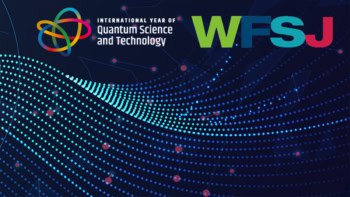Physics education is a subject that is almost as big as physics itself, and in some ways it is even more complex. Although the laws of physics are the same in Belfast, Bologna and Berlin, the way in which physics is taught in these three cities is very different. Indeed, there are even major differences in the way that physics is taught in the various corners of the UK, with students in England and Scotland having very different experiences of the education system.
Another complication arises because physics is just one of a large and growing number of subjects that are taught at schools and universities. This becomes important when trying to solve specific problems, such as the shortage of schoolteachers who have physics degrees. Physicists who are fans of markets would argue that this shortage means that physics teachers should be paid more money. Some governments are already offering financial incentives to new teachers of science and mathematics, but head teachers will be all too aware of the dangers of divisive splits in the staff room.
Perhaps any discussion of physics education should start with a question: why should we teach science or physics to anyone? There are many answers to this question. One response is that science and technology are becoming ever more important in the world, which means that it is essential for all citizens to be able to make informed decisions. The hard-headed business answer is that modern economies will only be successful if they have workforces with strong science and technology skills. The physics community, in turn, will argue that we teach physics to train the next generation of physicists.
The fact that all of these answers are valid presents us with another problem. More than half of those studying physics at any level will not move on to the next level at the end of their course. A large majority of the students who obtain an A-level in physics in the UK, for instance, study a different subject at university. Similarly, many physics graduates do not go on to pursue jobs in research or traditional physics-based industries (or, alarmingly, to become teachers). It is good for physics that it is a stepping stone to so many other places, but this also presents its own challenges to anyone teaching physics. In a nutshell, physics education must involve much more than training the next generation of physicists.
This issue lies at the heart of the debate that kicks off our special issue on physics education. In “Should physics be more elitist?” Mark Ellse argues that that physics is an elite activity that only a few will ever appreciate, while Jonathan Osborne counters that physics teaching should communicate the excitement of the subject to everyone.
The articles that follow address a range of issues, including recent changes in the way that science is taught to pupils in the crucial under-14 age group, the development of a new 21st Century Science curriculum for 14-16 year olds, the experiences of a new science teacher, the impact of the Bologna declaration on university physics departments across Europe, and attempts to prepare PhD students for careers outside academia (see “Challenging the next generation”, “Science education for the 21st century”, “Back to the future”, “A PhD is for life”, “Reforming European education” and “Physics education research: the key to student learning”).
The need to make courses both modern and relevant is a major theme at all levels. Welcome developments include using the very latest experiments in cosmology, for example, to teach the basics of forces or acoustics, and questioning the standard practice of teaching as you were taught. The latter issue is taken up in “Creating better seats of learning” by Derek Raine, who urges his colleagues in universities everywhere to be open to new teaching ideas. Evidence to back up this argument comes from Lillian McDermott, who reports rather disturbing findings about the effectiveness of certain “traditional instruction” techniques in universities (see “Physics education research: the key to student learning”).
Most physicists are passionate about their subject and have positive memories about the way they were taught, but we should not close our eyes to new and better ways to teach physics.




